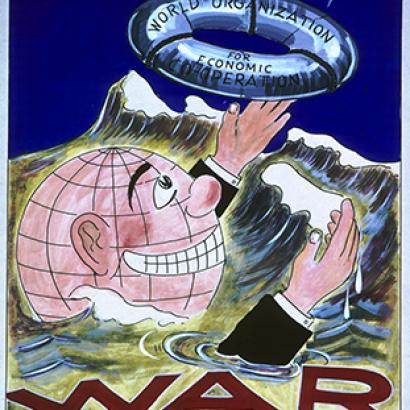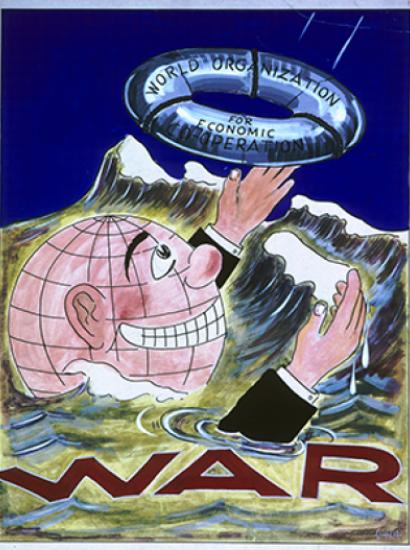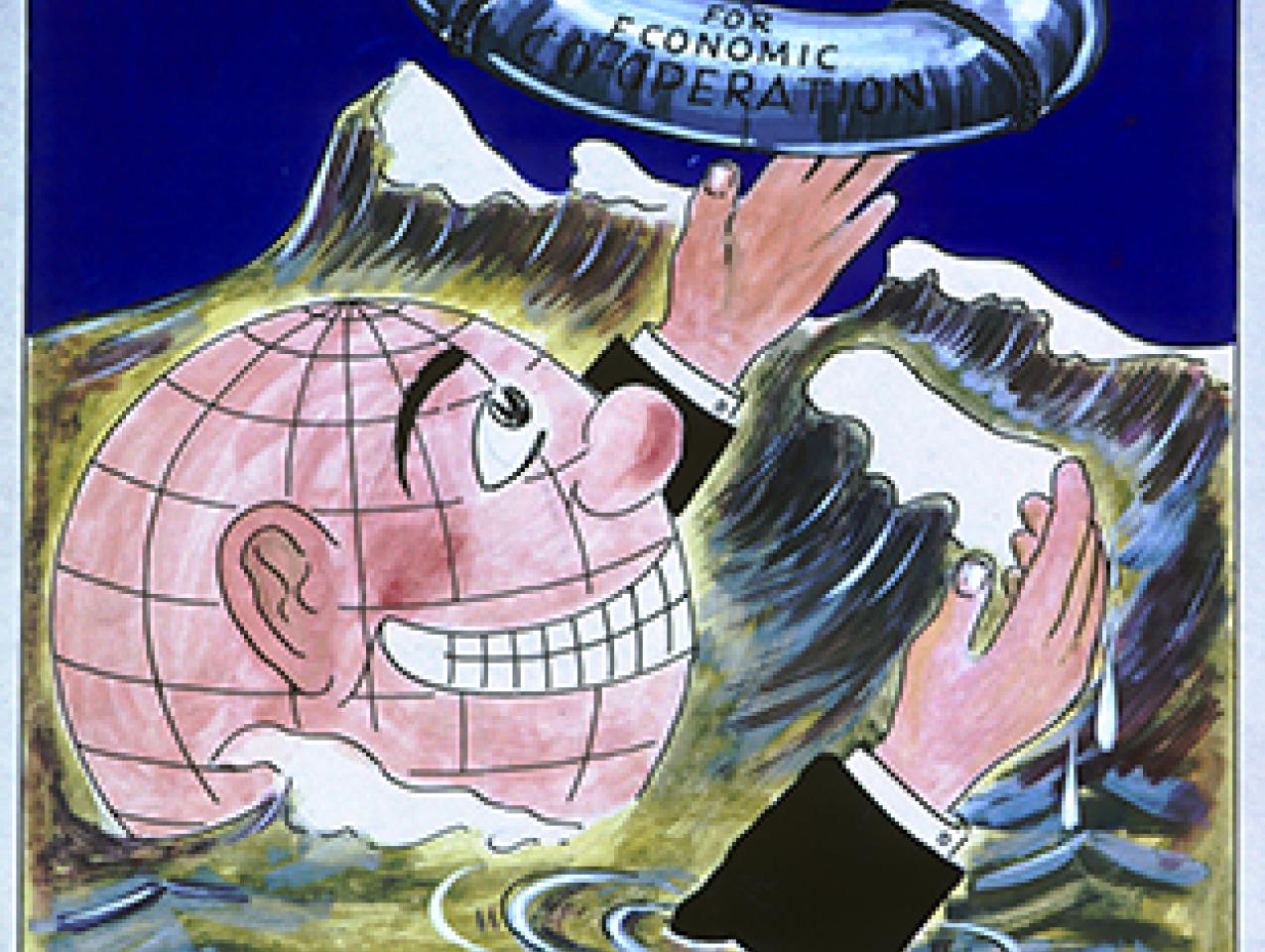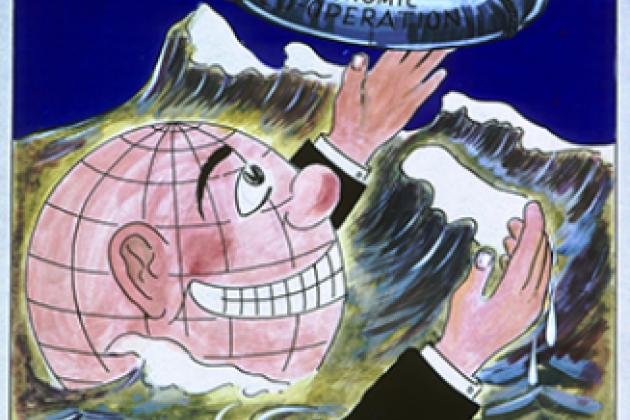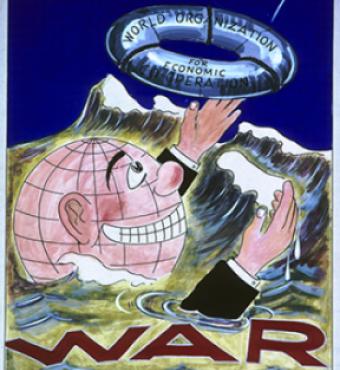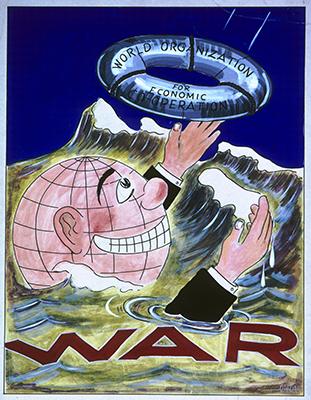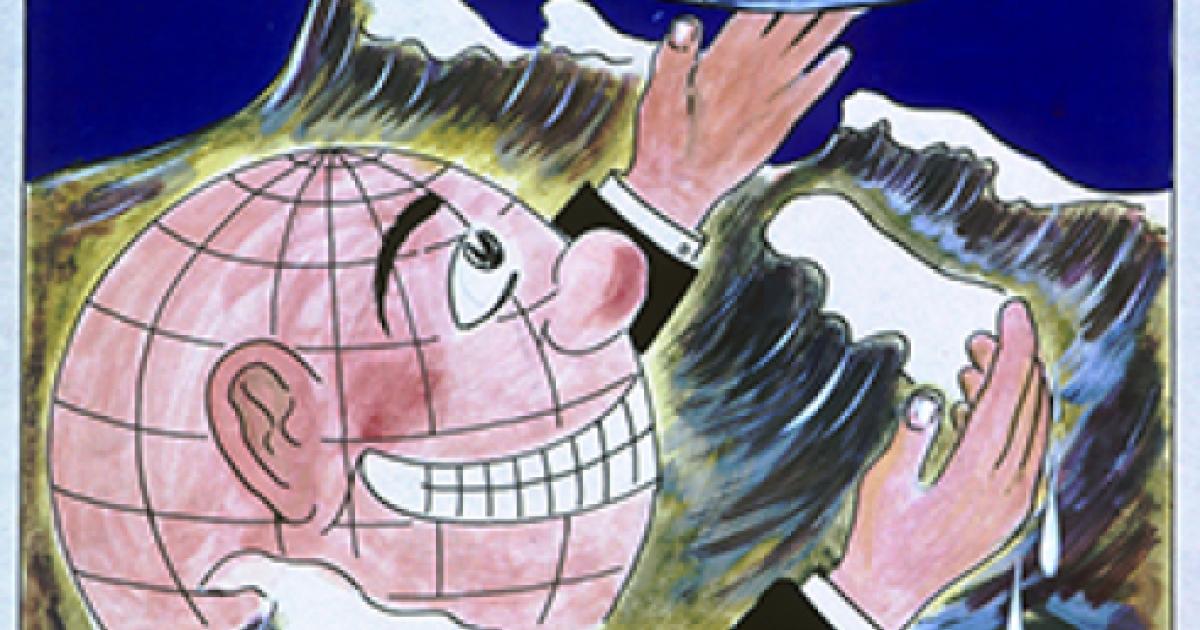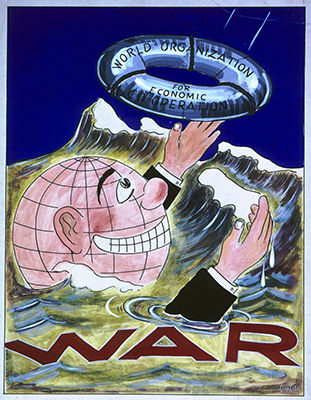
A monopoly obtains when one firm is free to set prices and output while keeping ambitious newcomers out of the market. The best example is Standard Oil in the late 19th century. Ruthlessly undercutting competitors, the company ended up controlling 90 percent of refined oil flows in the United States. The United States never had that kind of overweening power in the international “market.” It may have come close to unipolarity in the 1990s when its mortal rival, the Soviet Union, had committed suicide. Yet the contemporary world is no longer unipolar. Neither is it bi- or multipolar.
What, then, is the nature of the international system, as defined by the distribution of power? That depends on how the various sources of power measure up: economic, military, diplomatic, cultural.
A World of Two Triangles
Applying GDP as a gauge of economic might, the world looks tripolar. The three heavyweights are the United States with a 20-trillion-dollar economy, followed by the EU with 18 and China with 12. The next contender, Japan, is way down, weighing in at 5 trillion.
A critical measure is military power. The EU is rich, but not a strategic player because its 27 nations do not an e pluribus unum make. Nor is the EU equipped or willing to project force globally (unless in tandem with the U.S.). Like Japan’s, Europe’s safety is ultimately guaranteed by the United States. So it plays in a different league from China and Russia.
In the case of Russia, the relationship between economic and strategic weight is reversed when comparing Putinland with the EU. Militarily, it is a worthy rival of the United States, yet economically, it is a dwarf, given that the U.S. economy is thirteen times larger while the EU outstrips Russia by a factor of eleven.
In the strategic realm, where nuclear China is steadily modernizing its conventional forces, the world may be tripolar, as well. Yet the three poles—America, Russia, and China—are not equivalent. Unlike the U.S., Putin’s Russia cannot intervene anywhere in the world. The same holds true for China, though it is building a blue-water fleet to dominate at least the Western Pacific. Yet neither Russia nor China sits atop a globe-spanning system of alliances, as does the U.S. In fact, these two do not have any allies, let alone a planetary network of bases.
True, China’s land forces are almost twice the size of America’s. Yet the bulk of these are for internal and border security, whereas the U.S. does not have to worry about Mexico and Canada, nor about a restive population with a historic record of revolt and civil war. When it comes to forces beyond borders, the U.S. is far ahead on aircraft carriers and advanced large surface combatants. In the air, the U.S. fields three times as many military aircraft. Fifth-generation combat planes are steadily replacing the older craft. In terms of useable power, the U.S. is far ahead.
Economically, China also lags behind. Though an economic giant, the world’s No. 2, the Middle Kingdom does not have what matters more than mere GDP: America’s ability to dominate the channels of global trade and especially finance. It gives the U.S. a leg up on economic warfare, be it by way of sanctions or punitive tariffs.
What about China’s fabulous growth? The latest figure (2018) is 6.6 percent, a far cry from the double-digit rates in the past that spawned all these wide-eyed predictions of China as the new No 1. Set aside the debate on the veracity of such national statistics. Consider instead China’s growth model launched under Deng Xiaoping: over-investment, under-consumption, undervalued currency, and “exports first.” This model catapulted Japan, Taiwan, and South Korea into double-digit growth in the Sixties and Seventies. They are now down to low single-digits for reasons inherent in the model (add post-war West Germany to the roster). Add also that China is a disaster waiting to happen. Its national debt is estimated at three times GDP. Its banking system is drowning in non-performing loans. Empty new cities are testimony to over-investment in fixed assets. The working-age population began to shrink around 2015.
So the giant stands on wobbly legs. The more general point is this: The United States can play at any table in the global casino and then with the largest pile of chips of all of them. China and Russia cannot. They are strong enough to flex their muscles regionally, as in Syria, but not equipped to play a global game. All told, the contemporary system is not unipolar, but neither is it truly tripolar. China and Russia form the base of the strategic triangle while the EU and China do so in the economic one. Yet the United States represents the apex of both. So much for the snapshot.
If we look ahead, the picture turns blurry, and the question becomes: Can the United States maintain its exalted position? Donald Trump’s answer is a jubilant or growling “yes.”
With its surfeit of useable power, Trump’s America is trying to change the political and economic terms of trade in its favor—“pony up or else…” Donald Trump is taking the axe to the Liberal International Order (LIO) America built and guarded not only for itself, but also for others, which endowed it with a third source of unique power beyond its economic and military assets. To wit: alliances for mutual security, trade within rules-bound institutions, open economies, and multilateral conflict resolution. These institutions did limit U.S. autonomy, but they also granted Washington a hefty measure of authority grounded in consent and legitimacy.
Add to this unmatched cultural clout. The world speaks English with an American accent and absorbs American law in the new realms of commerce such as intellectual property. It gobbles up American gadgets like iPhones, communicates via U.S. social media, watches entertainment Made in Hollywood, and aspires to send its young to Caltech and Stanford. Russia’s cultural power is nil, and China’s is still miniscule.
Good Boys Go to Heaven, Bad Boys Have More Fun
Vast power has its own temptations. The election of Donald Trump in 2016 spells a caesura in America’s grand strategy whose depth and longevity is still hard to gauge. To put it in the harshest of terms, Trumpian policy is pursuing short-term gains at the risk of losing long-term leadership. The game is “I win when you lose.” Hence the trade battles with China and Europe, the pressure on allies to up defense spending, the reconstruction of NAFTA in favor of the U.S., the assault on the JCPOA, the nuclear deal with Iran, the fitful attempts at a “reset” with old enemies like Russia and North Korea that agitate and alienate old friends. At the end of this road, the LIO, the framework of U.S. influence and of its agenda-setting ability and convening power may well be history.
But not quite yet. It is a testimony to America’s vast strategic, economic, and financial clout that this approach to friends and foes is working. With his trade wars, Trump has gotten the attention of the EU, China, Canada, and Mexico. Though its economy is almost as large as the American one, the EU is treading very softly on retaliation. The Europeans are beefing up defense outlays and readiness. In the fall of 2018, NATO launched its largest war game since the end of the Cold War. In Norway, 50,000 troops, 250 aircraft and 10,000 vehicles from 31 countries demonstrated their ability to fight off a “fictitious aggressor,” aka Russia. Germany, the main target of Trump’s ire, fielded the largest contingent. Chalk one up for The Donald.
Trump may yet soften up North Korea and Iran, which is buckling under sanctions. The Palestinians, who have gotten an almost free ride for decades, are being confronted by Trumpian reality, what with the closing of their “embassy” in Washington. Add the defunding of UNRWA (United Nations Relief and Works Agency for Palestine Refugees in the Near East), the UN agency established to sustain Palestinians in camps on Israel’s periphery where they hold on to their revisionist dreams. More significant is the strategic realignment in the Middle East that defies 70 years of deadly Arab-Israeli enmity. It unites Israel, Saudi-Arabia, the “Gulfies,” and Egypt in a common front against an expanding Iran that clings to its nuclear option.
It is a further testimony to American power that the rest of the world is not (yet) ganging up on No. 1, as happened regularly in centuries past. In the end, superior coalitions brought down Europe’s would-be hegemons: Habsburg Spain, the France of Louis XIV and Napoleon, the Germany of Wilhelm II and Adolf Hitler. The Atlantic coalition prevailed peacefully against the Soviet Union. Great power begets greater counter-power, says international history. For the time being, the United States seems immune to this law as it throws its weight around in the age of Trump. The rest of the world is not about to go after Mr. Big. Not yet.
So in the shorter run, Trump has been scoring, keeping rivals off balance and getting his way in a game Thomas Schelling has laid out as Rationality of Irrationality in his Arms and Influence. Pretend to be unbalanced, and you will intimidate your opponents. What about the long run? The LIO and America’s global engagement are too costly according to Trump, allowing others to “free-ride.” Actually, this American “empire” comes quite cheap. The price tag is 4 percent of GDP for defense. It was ten times higher in World War II. The trade deficit runs to 2.9 percent, the current account gap to 2.5 percent of GDP.
The upside of such “dues,” as economists would remind us, is that external deficits (when a country consumes more than it produces) paradoxically spell not weakness, but strength. Essentially, the U.S. is a kind of central bank to the world, having fed streams of liquidity into the system since World War II. In turn, such a service makes the dollar a global reserve and transaction currency, without which Trump’s financial sanctions would lose their teeth. Conversely, surplus areas like Euroland or China cannot field a universal currency because they suck in more than they provide to the world. To boot, no nation has capital markets as deep and wide as the U.S. Together with an open financial system these spell power. The golden rule here is this: He who has the gold, makes the rules.
Maybe, Trump will be history by 2020. Maybe, America will resume its role as benign hegemon by once more upholding the LIO—doing well for itself by doing good for other. But if Trumpism—might makes right—is the future, the U.S. will lose out in this quasi-tripolar system as it keeps dismantling the U.S.-sponsored high-rise where it occupies the penthouse. Its commercial rivals may finally come together to unseat the almighty dollar. They might raise trade barriers against the U.S. while shutting it out of regional free-trade zones. They will form ad hoc coalitions to isolate the U.S. in the diplomatic arena.
In fact, an alliance of sorts has been emerging on Iran where the Europeans and the Russians are trying softly-softly to undercut U.S. financial sanctions designed to force Tehran to renegotiate the JCPOA. It defies the diplomatic imagination to believe that the U.S. can have it both ways. On the one hand, Washington inflicts punitive tariffs on the EU and China while rearming against Beijing and Moscow. On the other hand, the U.S. needs all of them to build an impenetrable sanctions wall around Iran. Even the mightiest nation on earth cannot pull off this trick. It cannot harness those it harms.
So short-term success comes with a long-term warning. Donald Trump is deconstructing the very order that has granted America a lifetime of primacy at acceptable costs. Bullies don’t have friends; their companions are fear and defiance. Those who keep breaking the rules they themselves have invented might end up in a world where their authority trickles away and others impose their own rules. Despotic regimes like Russia and China will not rebuild the international order Trump seems intent on dismantling in the name of “America first.”
It takes liberal states to craft and safeguard a liberal international order—Britain, then the United States. Conversely, the hegemonists of yesteryear went for conquest and top-down empire—Spain in the 16th century, France in the 17th, and again in the 19th under Napoleon, Germany’s under Wilhelm and Adolf in the 20th and Stalinist Russia after World War II. If the U.S. stops safeguarding the liberal order, illiberal regimes will step in, damaging U.S. long-term interests. Housekeepers do a lot better than housebreakers.







